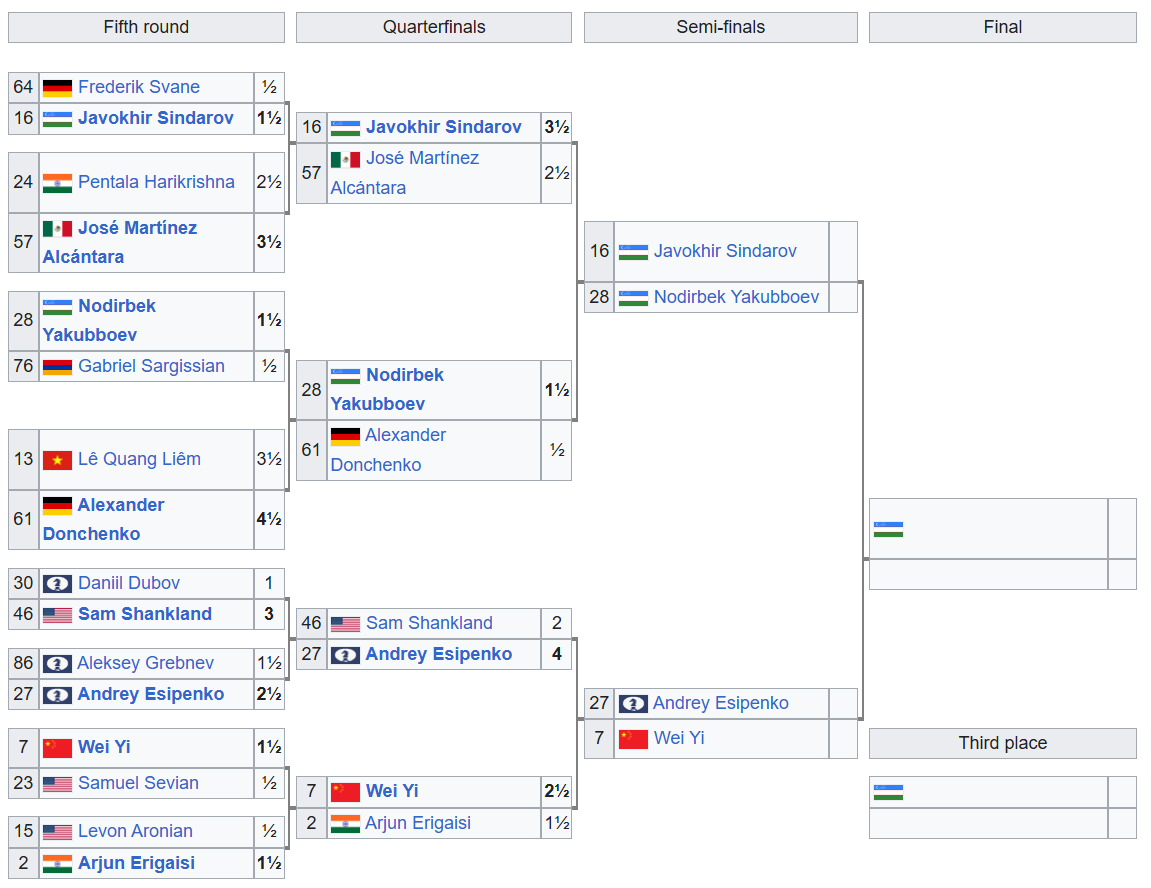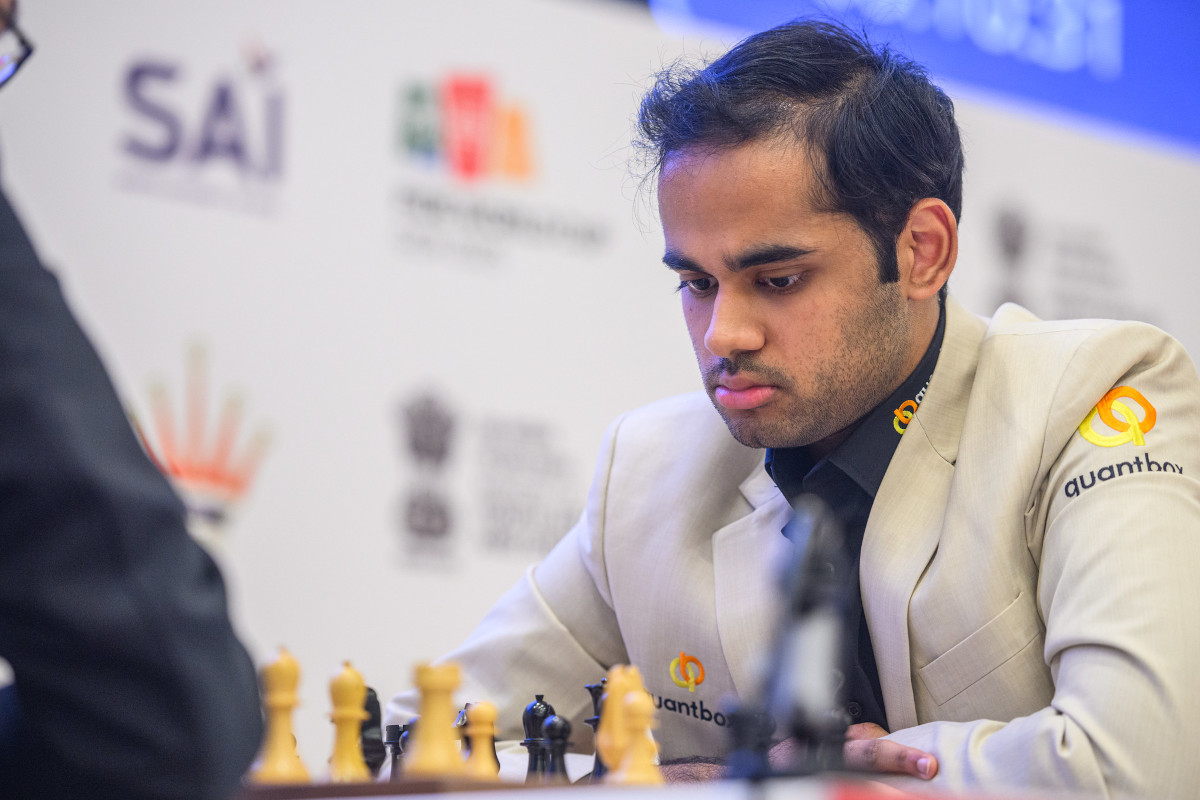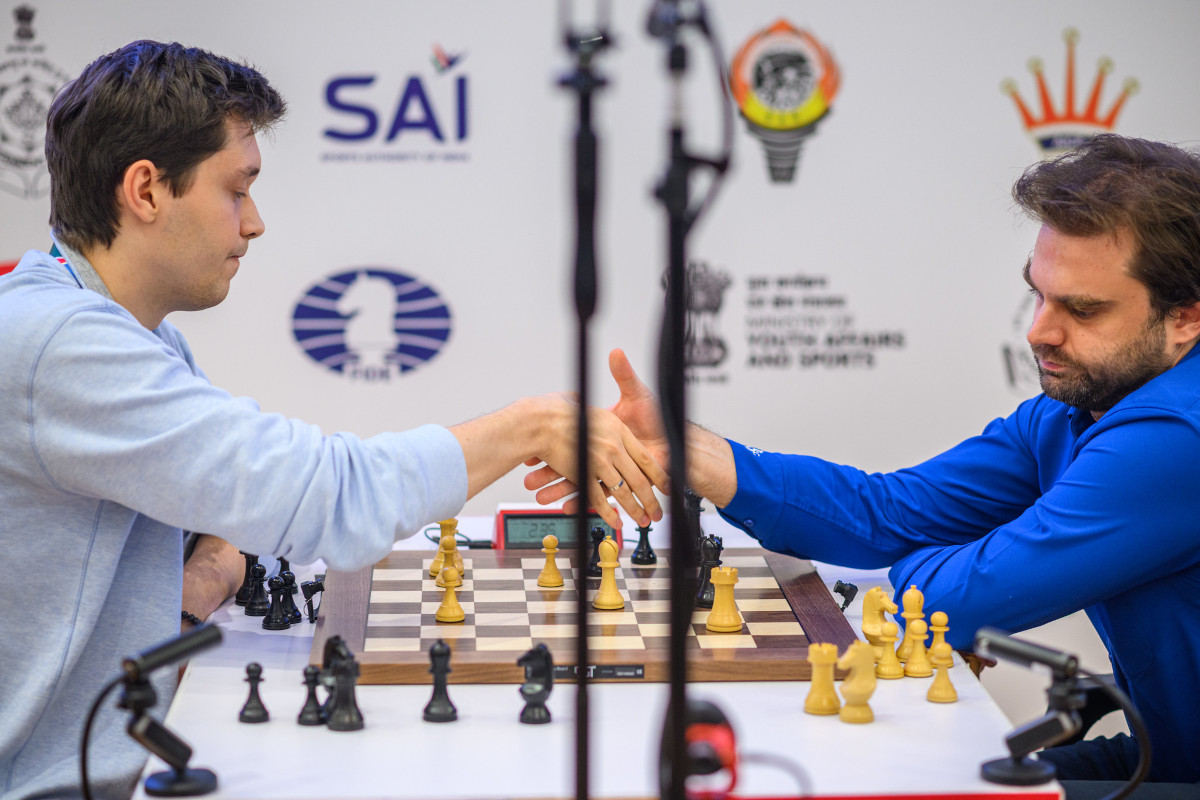One Uzbek participant guaranteed in next Candidates Tournament
A tension-filled day of rapid and blitz tiebreakers determined the semifinalists at the FIDE World Cup in Goa on Wednesday, as three of the four quarterfinal matches required extra play. Only the clash between seventh seed Wei Yi and second seed Arjun Erigaisi finished in the first rapid section, with Wei prevailing by a 1½–½ score after a tense, back-and-forth opening game and a strong win with the black pieces in the second encounter.
The two remaining quarterfinal matches were far more dramatic, each beginning with a comeback. Sam Shankland and Javokhir Sindarov both lost the first rapid game of their respective mini-matches but responded immediately with victories in must-win situation to force additional tiebreaks. In the Shankland v. Esipenko clash, the US grandmaster struck back with the black pieces after falling behind, while in Martinez v. Sindarov the players traded wins with the white pieces.
In today’s fast-paced chess world, especially online, where blitz and rapid games dominate, the traditional approach of grinding through lines of opening theory can feel overwhelming, and even unnecessary. The real challenge? Striking the right balance in your opening preparation. How deep should you go? Where do you stop? This course is built on the timeless wisdom of my legendary coach, Chebanenko, who designed opening repertoires for his “lazy” students – not lazy in attitude, but smart in approach. His philosophy? Don’t memorise. Understand.
With the matches tied after the 15+10 stage, the competitors moved on to the next section, played at a 10+10 time control. Here, the pressure was immense: all four players knew that reaching the semifinals would greatly increase their chances of earning a spot in the 2026 Candidates Tournament, since three places are awarded through the World Cup.
In the Shankland v. Esipenko match, the Russian grandmaster again took the lead by winning the first 10+10 game, and this time did not let his advantage slip. A second consecutive victory gave Esipenko a 4–2 overall win.
For Shankland, this marked a repeat of his 2021 elimination in the World Cup quarterfinals – a loss he has described as the most painful of his career – though he performed admirably throughout the event. After scoring two wins over Vasyl Ivanchuk in the first round, Shankland drew all his subsequent classical games, each against higher-rated opposition (Vidit Gujrathi, Richard Rapport, Daniil Dubov and Esipenko). Despite not being known as a rapid and blitz specialist, he prevailed in three consecutive tiebreak confrontations.

Sam Shankland, the 2018 US chess champion | Photo: Michal Walusza
The final match to reach the 10+10 stage was the encounter between Jose Martinez and Javokhir Sindarov. The first game of this section saw a quick 29-move draw, with Martinez choosing to repeat the position rather than press in a position where chances existed. In the rematch, Sindarov gradually outplayed the Mexican GM in a tense queenless middlegame. Demonstrating patience and precision, he converted his advantage to become the fourth semifinalist. At 19 years of age, Sindarov is the youngest player to reach the penultimate stage.
For Martinez – seeded 57th in Goa – the World Cup marked a career-defining performance. Known primarily for his online blitz strength, he proved that he could defeat elite classical opposition across formats. His run included match victories over Velimir Ivic and Pentala Harikrishna in tiebreaks and, most remarkably, classical wins against Nodirbek Abdusattorov and Alexey Sarana, two of the strongest players in the field.

One of the biggest over-performers in Goa, Jose Martinez (only matched by Alexander Donchenko in this category) | Photo: Michal Walusza

Looking ahead
The four semifinalists will enjoy a rest day before play resumes. All four remain in contention for qualification to the 2026 Candidates Tournament, where three places will be awarded.
The elimination of Erigaisi marks the end of India’s hopes in this World Cup, a major disappointment for the 22-year-old Telangana star, who will likely be one of the highest-rated players not to qualify (alongside Vincent Keymer and Alireza Firouzja). Nonetheless, India is still almost certain to be represented in the Candidates, as Praggnanandhaa Rameshbabu is the overwhelming favourite to win the 2025 FIDE Circuit.
In this insightful video course, Grandmaster David Navara shares practical advice on when to calculate deeply in a position — and just as importantly, when not to.
Free sample video: Introduction
Free sample video: Invisible moves
Meanwhile, Uzbekistan is guaranteed at least one representative in the Candidates, and possibly two. Sindarov and Nodirbek Yakubboev will meet in the semifinals – the winner secures qualification, while the loser receives a second chance in the third-place match. This is a landmark achievement: no Uzbek player has competed in a Candidates event since Rustam Kasimdzhanov participated in the 2007 Candidates Matches (he was eliminated by Boris Gelfand in a hard-fougt round-one match).
In the other semifinal, a representative from China will meet a representative from Russia, two federations still among the world’s most powerful chess nations – ranked third and fourth behind the United States and India in federation standings. The stage is now set for two compelling semifinal matchups, each carrying enormous sporting significance.

We are very likely to see the extremely talented Arjun Erigaisi in future editions of the Candidates Tournament | Photo: Michal Walusza
Wei 2½-1½ Erigaisi
Following two draws in the classical phase, where Erigaisi was the one getting winning chances in the second encounter, the first pair of rapid tiebreaks featured a draw in which both sides misplayed better positions and a win with black for Wei. The 26-year-old from Yancheng is now one match win away from reaching the Candidates.
Find below Wei’s victory analysed by Johannes Fischer.

Arjun Erigaisi allowed checkmate to appear on the board | Photo: Michal Walusza
Esipenko 4-2 Shankland
Two solid draws in the classical phase were followed by four decisive games in the tiebreakers. Esipenko scored first and saw Shankland bouncing right back. However, in the 10+10 section, the Russian grandmaster showed better nerves than his opponent to claim consecutive wins and thus overall match victory.
Find below Esipenko’s first victory of the day, analysed by GM Karsten Müller.
If one skill decides more games, it’s calculation. Openings fade, plans change – but seeing clearly, comparing lines, and choosing with confidence wins points. In this course GM Ganguly turns calculation into a trainable skill with a structured path for any level. You won’t just solve tactics; you’ll learn how to think: where to start, which branches to explore, when to stop, and how to keep a crystal-clear mental board under pressure.
Free video sample: Introduction
Free video sample: Forcing moves

Sam Shankland resigns the game and the match | Photo: Michal Walusza
Sindarov 3½-2½ Martinez
The longest match of the day saw Sindarov first coming back from behind and then converting a slightly favourable position (for rapid-chess standards) into the win that gave him overall victory. Martinez demonstrated great fighting spirit while in inferior situations, but perhaps failed to put more pressure on his opponent when he had the white pieces.
Find below Martinez’s victory in the first 15+10 encounter, analysed by GM Karsten Müller.
Picture this: you’ve outplayed your opponent move by move, you’re clearly better – and then the endgame slips into a draw, simply because you lacked the crucial theoretical knowledge. That is exactly where this course comes in. Without solid endgame skills, there’s no way forward. Rook endgames are most essential: they occur more often than any other type of endgame, and often make the difference between victory and half a point. If you master them, you’ll confidently convert your advantages into wins!
Free video sample: Introduction
Free video sample: Bodycheck

A cool-headed 19-year-old – Javokhir Sindarov | Photo: Michal Walusza
All games – Quarterfinals
Replay games from all rounds at Live.ChessBase.com
EXPAND YOUR CHESS HORIZONS
Data, plans, practice – the new Opening Report In ChessBase there are always attempts to show the typical plans of an opening variation. In the age of engines, chess is much more concrete than previously thought. But amateurs in particular love openings with clear plans, see the London System. In ChessBase ’26, three functions deal with the display of plans. The new opening report examines which piece moves or pawn advances are significant for each important variation. In the reference search you can now see on the board where the pieces usually go. If you start the new Monte Carlo analysis, the board also shows the most common figure paths.
